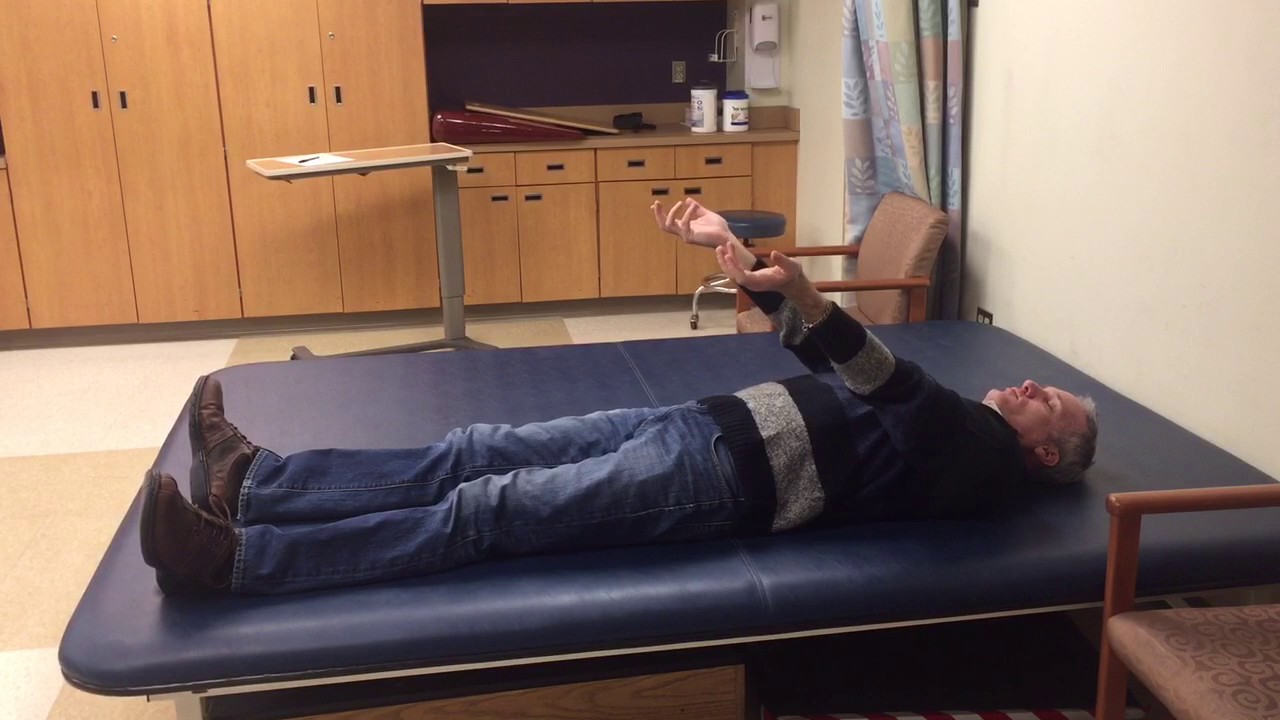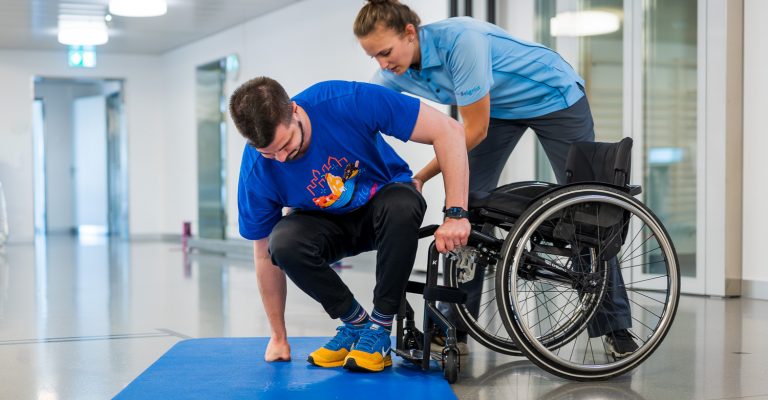Instilling a habit of bed mobility exercises for spinal cord injury can further enhance one’s skills processes of moving in and out of bed and sitting up straight. With a spinal cord injury, people may experience various levels of paralysis of their arms, torso, and legs. This will greatly hinder the independence in carrying out normal everyday life activities.
But remember always, where there is a will, there is a way! With practice on bed mobility enhancement, these valiant individuals greatly help enhance their lifestyle quality.
Bed Mobility Exercises for Spinal Cord Injury Patients
Activities such as rising from the bed require a great deal of effort from the arms, and so the following exercises would be recommended for the person with paraplegia, a condition defined as the occurrence of injury and subsequent paralysis of the lower body. Should you have the luxury to flex your elbows and wrists beyond an injury to the spinal cord incidences, the following exercises would suit you.
Interestingly, incidences of quadriplegia may allow some persons who, after the injury, to be paralyzed in the lower body and the arms ensue. Of course, you should do these movement exercises in bed, not on the floor. This way, you’ll learn to cope with the effects the mattress could have on your movements and impulses.
Also, remember not to have any hard objects in your bed, like cell phones or remote controls, and not to scrumple your bed sheets. Due to the spinal cord injury, you might not experience the feeling you usually would when you are lying over an object. This will create the opportunity for the pressure on your skin to be uninterrupted, and thus, blood flow will be limited, and the danger of pressure sores will consequently rise.

Another very important bed mobility exercises for spinal cord injury is the bridge. The bridge strengthens gluteal and lower back muscles, which are important for supporting sitting and standing balance.
Begin by lying on the bed, your upper body flat on the mat, and your two arms by your side. You may have to bend your knees and hew your feet by the bed, hip-distance apart. Press through your heels as both your feet are on the surface, lifting your hips off the bed.
Hold this bridge position for a count of some seconds and slowly bring down your hips again to touch the bed. Repeat it multiple times by increasing the duration for every next hold. Resulting in higher strength of your buttocks and lower back muscles, which will help make the process of getting up from lying easier.
Reverse Push-Ups
Now, let’s discuss a simple exercise to help you move better in your bed; it’s also good for making your arms strong and for learning how to sit afterward from a lying position.
Here’s how to do it:
Start lying flat on your back. Ensure your elbows are indeed bent and pointing to your sides. Now, let’s get the upper part of your body off the bed. To do this, push down with your hands and straighten your elbows.
After that, it is time to exercise your arms by lifting and lowering your body. You bend your arms to let your body go down and straighten them to lift your body up. It’s kind of like doing push-ups but on your back.
Next, we’re going to make that half-sit a full-sit. To do that, you maintain your elbows straight and shuffle them together on one elbow, then the other, down to your hip. Now you’re sitting up!
To return down is equally simple. Just shuffle your arms back and slowly let your upper body go back toward the bed.
Vertical Lifting
When lying down, it is a harder task for a paraplegic patient to sit up or sit from a lie because the arms need much support from the pulled-out muscles. The vertical lifting exercise will, therefore, go a long way toward arm and shoulder strengthening, which in turn will enable easy sitting up.
Start by lying flat on your back at the end of the bed. Take a big breath in and brace your core. Then, exhale and, using the strength of your arms, lift up onto the edge of the bed and into the set position; hold. Slowly lower yourself back down as many times as you can. Repeat the exercise a few times, holding a little longer each time.
Body Twists
Here is an exercise of movement application specifically designed for those with a spinal cord injury. It shows you how to roll yourself smoothly to your side from bed.
First things first, you need to ensure that you’ve got enough room by your side to do a rollover that’s not dangerous. Then, slowly, with your arms, bring your right leg to the left one.
As you lie on your back, partly lift your head and quickly move your arms to the left. The whole process may require that you rock a bit towards either side two times. This is meant to build up enough power for the roll.
Use the motion created by this side-to-side rocking to help turn the rest of your body to your left side. Go ahead and replicate these steps on the other side. This time around, your left leg is meant to cross over your right one as you roll towards your right side.
Gentle Hamstring Stretch
Spinal injuries, if you’ve ever had one, sometimes this is as far as it gets in degree and severity, resulting in full-blown paralysis of the trunk and legs. This would make even the most basic task of sitting up straight a little difficult. But do not worry; try this bed mobility exercise to gain balance in a sitting position.
Let me take you through it. First, ensure that your legs are well stretched in front of you. Then, with minimal effort, move your upper body slightly forward, towards the toes. This forward-leaning movement helps you not to tilt back.
Furthermore, keeping your legs straight can act as a little bit of a counterbalance, as they give enough resistance in your hamstrings to keep you from going too far forward and falling over.
Rehabilitative Therapies for Bed Mobility Exercises for Spinal Cord Injury

Bed mobility is a general skill that can be honed with occupational therapy support during rehabilitation following a spinal cord injury. However, there is no understatement of physical therapy’s aid in augmenting this mobility.
Both occupational and physical therapy do practically the same thing: help in gaining the most function possible after sustaining a spinal cord injury, but each one acts a bit differently in doing so. Occupational therapy typically assumes a more functional approach to rehabilitation.
Individuals participate in everyday activities such as dressing up and bathing. Contrarily, physical therapy is subjected to physical exercises, which include stretches and muscle strengthening, towards regaining movements.
More simply put, occupational therapy exercises are task-related and related to what the person does in daily life. Physical therapy exercises work on some necessary strength, flexibility, and stability to carry out those activities.
Occupational therapy allows the individual to attempt various adaptive devices and different bed mobility exercises. However, they can also benefit greatly from physical therapy, which helps them build up their arm, core, and leg muscles. It’s almost as if working out in the gym in a more specialized, therapeutic way.
To Sum Up
Bed mobility exercises for spinal cord injury simultaneously boost the coordination required for effective movements on the bed by the injured and aged population, ideally improving their mobility accordingly. These exercises deal with achieving effective moving coordination on the bed using muscle strengths for purposeful movements and ensuing independence in daily activities.
Always ensure you consult your health team before trying any new exercise. They’ll be able to advise you on exercises that suit your needs and show you how to do them correctly without hurting yourself. Bed mobility exercises will improve your physical ability and quality of life if practiced properly and frequently.

